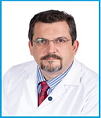Biography:
Jumana Hussain is presently working at Al- Farwaniya Institute, Kuwait. She has graduated in Otolaryngology
Abstract:
Introduction: This paper describes a case of a rarely occurring tumor of thesubclavicular region (i.e., fibrolipoma), which belongs to a group ofbenign tumors. It is more frequent in males than in females. In con-trast to our case, it comprises mostly of fibrous connective tissue,well separated from the surrounding tissues. However, in our case,it was deep and painful, and caused neurological symptoms. Thetreatment of fibrolipomas is only surgical. As only few cases havebeen reported in the literature, the present case is worth reportingto provide more information about this rare entity.
Case presentation: A 41-year-old Asian woman was brought to our ENT (ear nose-throat) clinic because of a slowly progressive swelling of the leftsubclavicular region since 10 years before, which became painfulwith time, associated with increasing subpectoral and shoulderpains, left arm swelling, and left forearm paresthesias. The patientcomplained of weak grip, and her
left hand was cold to touch, whichwas associated with the feeling of tremors in her left arm. Con-trast computed tomography (CT) and magnetic resonance imaging (MRI) T1- and T2-weighted sequences by fat-suppression tech-niques revealed a 125- × 72- × 46-mm thinly septated subpectoralhypodense mass extending from the neck to the anterior lefthemithorax. The ovoidal well capsulated the mass in the retroclav-icular and subclavicular regions, between the axillary artery and thevein, displaced the axillary-subclavian bundle anteriorly withoutextension into the neural foramina (Fig. 1). The lesion compressedthe brachial plexus and was consistent with either a lipoma orliposarcoma. Ultrasonography-guided fine-needle aspiration cytol-ogy was
requested and revealed a fibrolipoma. Considering thelocation of the fibrolipoma and the age of the patient, surgicalexcision via the anterior neck approach was planned and dis-cussed with the patient. After obtaining informed consent from thepatient, surgery (i.e., excision of the fibrolipoma) was performedusing the anterior neck approach, and the mass was completelyremoved (Figs. 1 and 2). The patient was discharged on the sec-ond postoperative day and his general condition was good and hewas symptom-free at 1-month follow-up (Fig. 2). A specimen wassubmitted for histopathological examination and was reported todemonstrate features consistent with fibrolipoma (Figs. 3 and 4).
Discussion and review of literature: Large fibrolipomas/lipomas of the subclavicular/thoracic outletregion are usually represented by an enlarging neck or supraclav-icular mass that is typically associated with upper shoulder or armpain. The actual incidence of thoracic outlet syndrome (TOS) due to fibrolipoma in the general population is not known because ofthe absence of widely recognized signs or cost-effective laboratorytests. Owing to the lack of sufficient diffusion of the syndrome in the medical literature, it is also a poorly defined medical entity. Theactual incidence seems generally low, even though in more recentstudies, the incidence appears to be higher. This disease is an often-misdiagnosed cause of chest, neck, and shoulder pains and one ofthe frequent upper extremity neuropathies.The exact etiology of fibrolipomas remains disputed, andendocrine, dysmetabolic, genetic, and traumatic factors have beenoften considered [1]. A fibrolipoma characteristically grows by simple expansion in a well-encapsulated fashion without the tissueinfiltration that is more characteristic of liposarcomas [9]. Despitetheir benign nature, fibrolipomas may be a challenge to the sur-geon owing to their anatomical setting. The most popular surgicalapproach for TOS is transaxillary first-rib resection [2], where atransverse incision is made over the third rib just inferior to the axil-lary hairline and deepened between the pectoralis major and thelatissimus dorsi muscle [3]. The scalene muscle attachments to thefirst rib are released, and the rib is excised extraperiosteally fromthe chondrosternal articulation to the costotransverse articulation[4]. The rationale for this approach is that the first-rib resectionpermits the widening of both the interscalenic triangle and cos-toclavicular space [5,6]. Other procedures include supraclavicularincision, like in our case, or the posterior subscapular approach,which is reserved for more complicated TOS cases [8–12]. Oursurgical approach was suggested according to mass location andpatient age. Moreover, the benign pathological outcome supportedour strategy.
Conclusion: Benign soft tissue tumors such as infraclavicular subpectoralfibrolipomas may exert pressure on the neurovascular surround-ing structures during their progressive expansion and cause TOS.Therefore, a thorough preoperative study using a radiological imag-ing modality such as MRI or neurophysiological tests should alwaysbe performed to prevent unintentional lesions of the involvedaxillo-subclavicular plexus and plan a correct surgical procedure.Benign subpectoral infraclavicular masses should be consideredwhen evaluating a possible thoracic outlet syndrome in patientswith brachialgia, loss of strength, and Raynaud’s phenomenon. Athorough radiological assessment, preferably with MRI with thefat suppression technique, is mandatory to ascertain neurovascularcompression by large fibrolipomas/lipomas.










